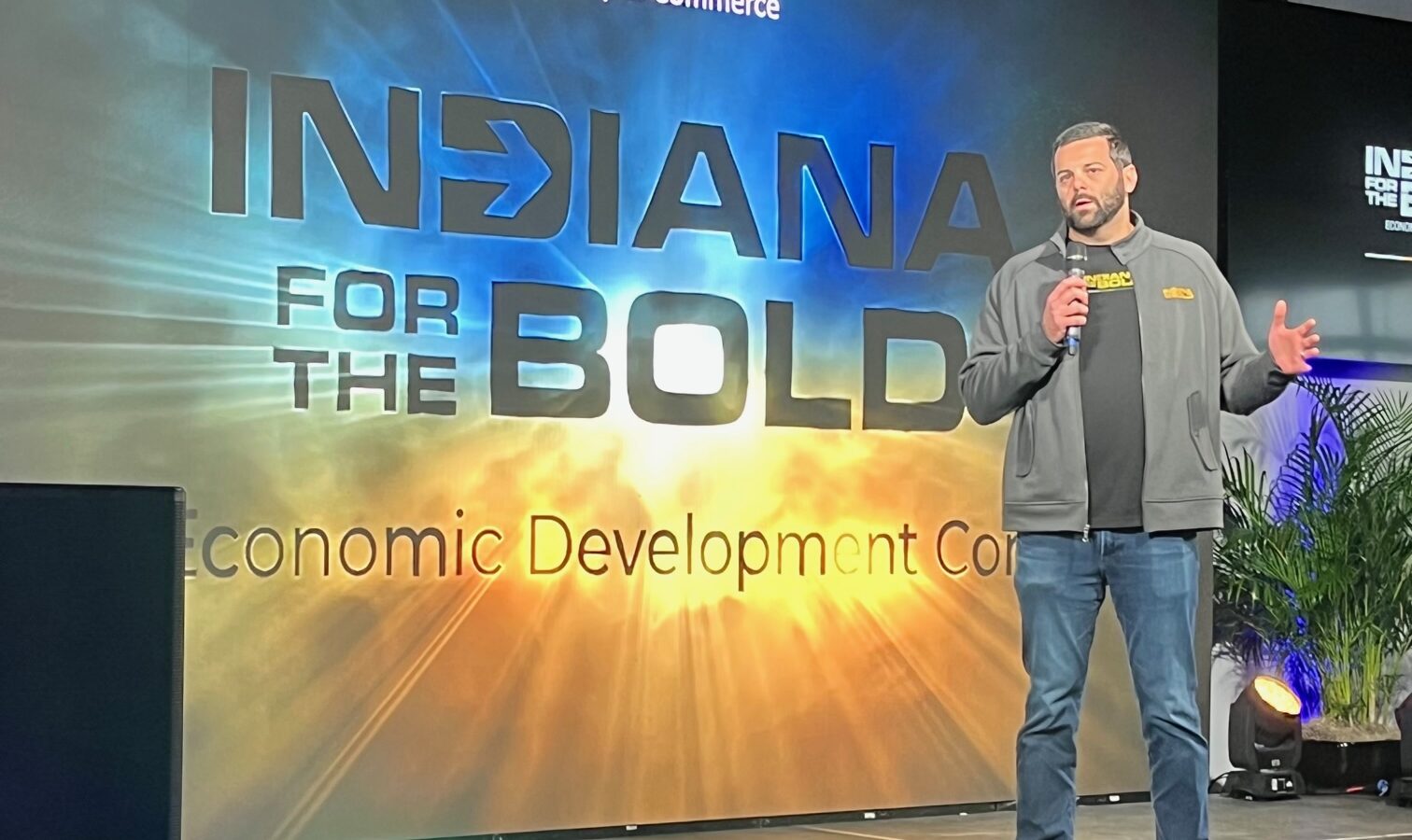How to Be Bold & Get Results
“The not-so-secret, secret, is that entrepreneur-led economic development is also community development. Every community needs entrepreneurs to thrive,” shares David Watkins, Senior Vice President of Entrepreneurship & Small Business at Indiana Economic Development Corporation (IEDC).
Forbes recently ranked Indiana as the #1 Overall best state to start a business based on its combination of low taxes, reasonable cost of living and a prime workforce. According to Watkins, that’s simply the start of the success story.
“Indiana is also in the top four nationally for the success of our startups after one year of operations,” he reveals. “Not only is Indiana the best place to start your business, it’s also the best place for your business to keep going and growing. Currently 74% of the net new jobs created in the state of Indiana come from firms less than five years old. I think that speaks to the strength of our ecosystem.”
What does it mean to build a thriving entrepreneurial ecosystem? How does innovation become impact? And what strategies could we all discover and deploy to grow our own companies and communities?
These seven strategies form the foundation on which to build sustainable economic impact.
1. Centralization. If you’ve ever tried to build or sell a house on your own, you’re familiar with the frustration of decentralized resources. Now imagine trying to build a company without a blueprint for how to incorporate, find investors, file permits and more. Breaking down barriers to access by centralizing resources to make important insights easier to locate is a critical first step.
“When we started this journey, there was not a single digital space that listed the top five or six resources a small business should know about and take advantage of,” Watkins shares. “That information only lived in our brains. And our brains could only be accessed during working hours.” The Connect IND portal was the resulting brainchild. Now, no matter where an entrepreneur is located or what hours an entrepreneur works, the site surfaces resources within their county as well as two counties away that could benefit them.
2. Connectivity. Simply stated, the ability to pick up the phone and get to someone who can help. “What do cost and connectedness look like?” Salena Scardina, Executive Vice President – External Engagement, IEDC, posed. “I define it as the ability to voice out loud what you want to achieve and then be one or two conversations or calls from getting the help you need to be successful.”
Thanks to the portal as well as “Tourist in Your Own Hometown” campaigns, the IEDC is creating connectivity opportunities. And connectivity is surfacing cash flow success stories at a rising rate.
“One entrepreneur shared that when she was headquartered in California, she only had nine months of operating cash flow,” Scardina says. “Capital is King. Cash flow is Queen. Since she moved her headquarters to Indiana, she now has 36 months of operating cash flow now between cost of operations and connectivity.”
3. Collaboration. Public-Private partnerships accelerated Indiana’s stratospheric rise. Thirteen years ago, Indiana prioritized partnerships to distribute public dollars through Venture Capital (VC) funds to founders seeking support. The IEDC developed a primary partnership with VC Elevate Ventures that continues to pay dividends.
“Just to give you a sense of how active Indiana has been at deploying capital for venture backed companies, the most recent rankings released by Pitchbook, who ranks VC’s globally,” Watkins explains, “Elevate Ventures, our partner who deploys dollars on our behalf, was the 5th most active venture capitalist in the entire country and the 12th most active venture investor in the world.”
4. Curiosity. Insatiable curiosity is an impossible to ignore attribute of a thriving innovation ecosystem. That means gathering groups from different geographies, perspectives, industries and backgrounds to brainstorm. And to ask thought provoking questions.
“We think about what’s next. We don’t have all the answers,” Watkins emphasizes. “By engaging with industry partners, by engaging with our university partners, we can start to have conversations about what’s the future of alternative energies and fuel sources in Indiana? And what role can hydrogen play? Given our motorsports affinity, how could we play a leading role in autonomous vehicles or the advancement of AI?”
Asking great questions is key to creating paths to new possibilities.
5. Community. We’ve all heard the saying, “Meet people where they are.” And that adage is especially true when it comes to creating a thriving ecosystem. That’s why the Connect IND portal is coupled with live Navigators who reside in each of the 92 counties in the state rather than sourcing them from a staffing firm or centralizing them in the capitol building. Community based resources fuel community-based connections.
6. Customer Experience. Scardina brings her background in Customer Experience to the IEDC and sums up their strategy in a single word: intentional. “Intentional Customer Experience is Hoosier Hospitality bottled up to be given to entrepreneurs,” she enthuses. “That’s why we offer resources in ten languages. Also, let’s say you’re getting bigger, and you need permits. We are hearing repeatedly that our permitting process is so easy. It’s because we designed it that way. That’s something you don’t get kudos for, but it matters.”
7. Celebration. Storytelling is critical to elevate existing entrepreneurs and to inspire the next generation of entrepreneurs. Each year Indiana publishes a yearbook of success stories.


